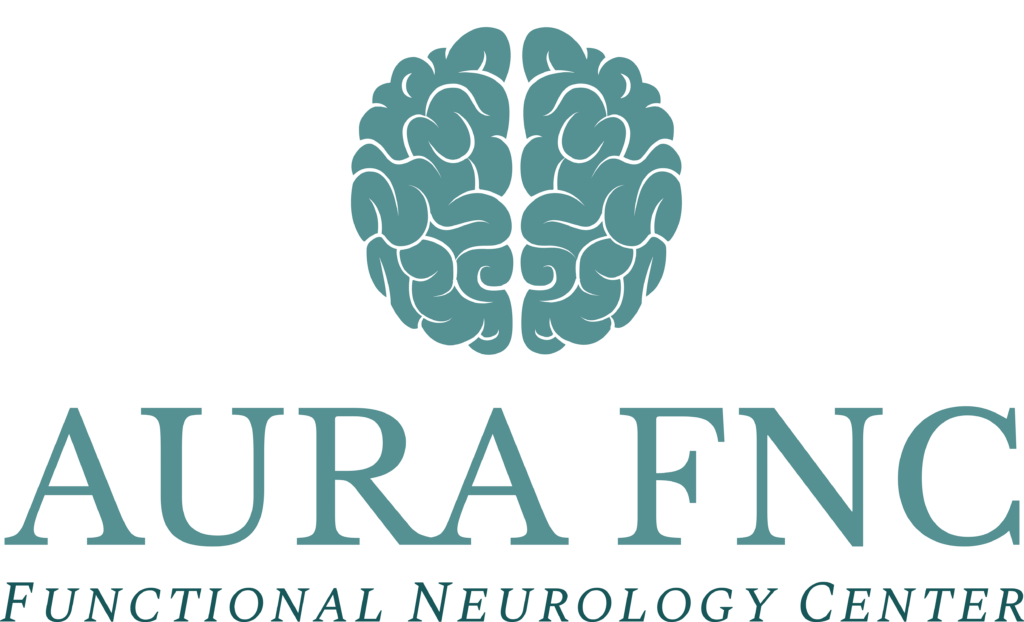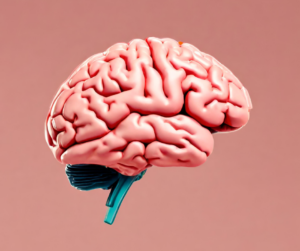Discover how yoga and meditation can help and offer relief from migraine. Learn how to manage stress and reduce triggers for a better quality of life.

Dr. Diana Tyler DC, DACNB
Founder of Aura Functional Neurology Center. Board Certified Chiropractic Neurologist and migraine specialist. Graduate of Palmer College of Chiropractic and Diplomate of the American Chiropractic Neurology Board.
Discover how yoga and meditation can help and offer relief from migraine. Learn from Dr. Diana Tyler how to manage stress and reduce triggers for a better quality of life.
How can Migraine be Helped by Yoga and Meditation?
A migraine is a chronic neurological disorder involving moderate to severe headaches. It is characterized by throbbing pain, often on one side of the head. Other symptoms, such as nausea, sensitivity to light and/or sound, and visual disturbances, often accompany it. Migraines can vary in duration, with some lasting a few hours while others persist for several days. The exact cause of migraines is still being investigated, but it involves changes in the brain and how it processes pain. Migraines can significantly impact a person’s quality of life, affecting their ability to work, socialize, and perform daily tasks professionally. It is essential for individuals who experience migraines to seek medical advice from a provider to manage and alleviate their symptoms effectively.
Benefits of Using Yoga and Meditation for Migraine
Yoga and meditation have numerous health benefits, including their ability to help alleviate migraine headaches. For migraine sufferers, these practices can offer much-needed relief and improved quality of life.
One of the main benefits of yoga and meditation is stress reduction. Stress triggers migraines, and by incorporating these practices into their daily routine, individuals can effectively manage stress levels. The relaxation techniques used in yoga and meditation help activate the parasympathetic system, leading to a more relaxed inner state.
Yoga poses that focus on the upper body can specifically target the areas affected by migraine pain, such as the neck, shoulders, and head. By stretching and releasing tension in these areas, individuals may experience a reduction in the intensity and frequency of their headaches.
Meditation practices, particularly mindfulness meditation, can promote emotional well-being and help individuals develop an increased awareness of their body and mind. This mindfulness can reduce sensitivity to triggers and pain, leading to better management of migraines.
While yoga and meditation do not replace treatment, they can complement and enhance a migraine sufferer’s pain management routine. Consulting with a healthcare provider, yoga instructor, or meditation teacher can help tailor a practice specifically for the individual’s needs.
In a randomized clinical trial by Kumar et al. (2020), titled “Effect of yoga as add-on therapy in migraine,” published in Neurology, the researchers explored the benefits of yoga as an additional treatment for migraine. By incorporating regular yoga sessions into daily life, migraine sufferers may experience reduced headache frequency and pain intensity. So grab your yoga mat, slowly breathe in, and embark on a journey toward a better quality of life with yoga and meditation.
Resources:
Kumar A, Bhatia R, Sharma G, Dhanlika D, Vishnubhatla S, Singh RK, Dash D, Tripathi M, Srivastava MVP. Effect of yoga as add-on therapy in migraine: A randomized clinical trial. Neurology. 2020 May 26;94(21):e2203-e2212. doi: 10.1212/WNL.0000000000009473. Epub 2020 May 6. PMID: 32376640.
Quality of Life
Migraine disease can greatly impact quality of life, as it can disrupt daily activities and cause immense pain and discomfort. However, incorporating yoga and meditation into one’s routine can positively improve the quality of life in migraine sufferers. By reducing stress levels and promoting relaxation, these practices can help manage migraines and triggers. Yoga poses that target the upper body can specifically address areas affected by migraine pain, providing relief and reducing the intensity and frequency of headaches. Additionally, meditation practices, particularly mindfulness meditation, can enhance emotional well-being and increase awareness of the body and mind, leading to better management of migraines and a higher overall quality of life. While yoga and meditation should not replace medical treatments, they can be powerful complementary tools when tailored to an individual’s needs by healthcare providers, yoga instructors, or meditation teachers.
Impact of migraines on quality of life
Migraines can significantly impact an individual’s quality of life, affecting various aspects of their daily activities, relationships, and overall well-being. These debilitating headaches can leave individuals feeling physically and emotionally challenged, making it difficult to enjoy normal activities and maintain healthy relationships.
Physically, migraines can bring about intense pain, often accompanied by sensitivity to light, sound, and even touch, limiting an individual’s ability to engage in daily tasks and participate in social activities. The pain and discomfort can also lead to muscle tension, exacerbating the headache and causing difficulty performing even simple activities.
Emotionally, migraines can take a toll on an individual’s mental well-being. The chronic nature of migraines can lead to frustration, helplessness, and depression. The unpredictability of migraine episodes can create anxiety and fear of missing out on important events or being unable to meet responsibilities, leading to increased stress levels.
In the workplace, chronic migraines can hinder productivity and job performance, often requiring individuals to take frequent sick leave, impacting career growth and financial stability. Migraines can also strain personal relationships, as individuals may need to cancel plans or withdraw from social engagements due to the unpredictable nature of their condition.
Managing migraines and improving quality of life involves a comprehensive approach. Seeking treatments, such as neurological rehabilitation, can help alleviate symptoms and reduce the frequency of migraines. Developing healthy coping strategies, such as practicing yoga and meditation, can also provide relief by reducing stress levels and promoting relaxation. Building a support network of understanding family, friends, and healthcare providers can also help individuals navigate the challenges of living with migraines.
By implementing listed strategies and finding a balance of self-care and seeking support, individuals can regain control over their lives and improve overall well-being despite the challenges posed by migraines.
How yoga and meditation can improve quality of life
Yoga and meditation can significantly improve the quality of life for individuals suffering from migraines. By incorporating these practices into their routine, migraine sufferers can experience a reduction in the frequency and severity of migraine attacks.
Yoga poses and breathing exercises can help alleviate the physical tension associated with migraines, promoting relaxation and easing the intensity of headaches. Regular yoga sessions can also improve blood circulation and increase flexibility, positively impacting overall health.
Meditation, specifically mindfulness-based stress reduction, has been proven to reduce stress levels, a common trigger for migraines. It allows individuals to cultivate a sense of calm and focus, helping to prevent migraine episodes. Additionally, meditation can lower blood pressure and anxiety, promoting a relaxed state of mind and improving sleep quality.
By integrating yoga and meditation into their daily lives, migraine sufferers can find relief from the debilitating symptoms of migraines and enhance their overall well-being. These practices offer a natural and holistic approach to managing migraines, empowering individuals to regain control of their lives and improve their quality of life.

Blood Pressure and Heart Rate
Introduction:
Migraines can often triggered by factors such as stress and anxiety, which in turn, affect blood pressure and heart rate. However, practicing yoga and meditation can help regulate these physiological responses and promote well-being. By incorporating specific yoga poses and mindfulness techniques into their routine, migraine sufferers can experience improved blood pressure and heart rate, reducing migraine frequency and severity. This article will explore how yoga and meditation can positively impact these vital signs, ultimately improving the quality of life for individuals struggling with migraines.
Blood Pressure:
High blood pressure, also known as hypertension, can increase the risk of developing migraines and worsen existing ones. Regular yoga helps regulate blood pressure by promoting relaxation and reducing cortisol levels. Yoga poses, particularly those that focus on deep breathing and gentle stretching, such as yin yoga, can activate the body’s relaxation response, decreasing blood pressure. Additionally, yoga sessions often incorporate meditation, which further aids in stress reduction and blood pressure management. By incorporating yoga into their routine, migraine sufferers can effectively regulate their blood pressure and potentially reduce migraine intensity and frequency.
Heart Rate:
Elevated heart rate is another physiological response associated with migraines, often triggered by stress and anxiety. Regular yoga and meditation practices can help regulate heart rate by promoting relaxation and calming the nervous system. Deep breathing exercises, commonly used in yoga and meditation, activate the body’s relaxation response and help slow the heart rate. Additionally, certain yoga poses, such as gentle forward folds and restorative postures, encourage relaxation, further aiding heart rate regulation. By committing to regular yoga and meditation sessions, individuals can experience a decrease in heart rate, reducing migraine frequency and improving overall well-being.
Changes in Blood Pressure and Heart Rate during Migraine Attacks
During migraine attacks, there can be significant changes in blood pressure and heart rate, which can profoundly impact migraine sufferers. These changes are often a result of the complex changes occurring in the brain and the body during a migraine episode.
One important factor that can contribute to changes in blood pressure and heart rate during migraines is the release of certain chemicals in the brain, such as dopamine. Dopamine levels change during migraines, and this reduction can lead to changes in blood vessels, impacting blood flow.
Changes in blood pressure during migraines can result in both increases and decreases in blood pressure. Some individuals experience spikes in blood pressure, leading to a hypertensive crisis, while others may experience drops in blood pressure, causing symptoms such as dizziness and lightheadedness.
Regarding heart rate, migraines can cause an increase in heart rate, also known as tachycardia. This increased heart rate can be a response to the pain and discomfort experienced during a migraine attack.
These changes in blood pressure and heart rate can worsen migraine sufferers’ overall symptoms and quality of life. They can contribute to increased pain levels, sensitivity to light and sound, and fatigue.
By practicing yoga and meditation regularly, individuals with migraines can improve and regulate their blood pressure and heart rate during attacks. Yoga poses that emphasize deep breathing, gentle stretching, and relaxation can activate the body’s relaxation response, which can help manage blood pressure and heart rate. Meditation techniques, such as mindfulness meditation, can also reduce stress and promote relaxation, thus positively impacting blood pressure and heart rate.
In conclusion, changes in blood pressure and heart rate during migraine attacks are common and can significantly impact the well-being of individuals with migraines. Incorporating yoga and meditation into their lifestyle can potentially regulate these physiological responses, improving blood pressure and heart rate management and ultimately reducing the frequency and severity of migraine attacks.
How Yoga and Meditation Help Lower Blood Pressure and Heart Rate
Yoga and meditation can be valuable tools in managing blood pressure and heart rate during a migraine attack. Migraines can cause blood pressure and heart rate fluctuations, leading to increased pain and discomfort.
Individuals with migraines can regulate these vital signs by incorporating yoga and meditation into their routine. Yoga poses emphasizing deep breathing, gentle stretching, and relaxation activate the body’s relaxation response, which can help manage blood pressure and heart rate. Meditation techniques, such as mindfulness meditation, aid in stress reduction and promote relaxation, positively impacting these vital signs.
Specific yoga poses that effectively lower blood pressure and heart rate during a migraine attack include Child’s Pose, which helps release tension and relaxation, and Standing Forward Bend, which promotes blood circulation and reduces stress. Meditation techniques like deep breathing exercises and body scan meditation can also assist in regulating blood pressure and heart rate.
In conclusion, regular practice of yoga and meditation can be beneficial in maintaining stable blood pressure and heart rate between attacks. By incorporating these practices into their routine, individuals with migraines can minimize the impact of migraines on their overall well-being.
Blood Flow
When it comes to managing migraines, maintaining healthy blood flow is crucial. Poor blood circulation can contribute to the onset and severity of migraine headaches. Incorporating yoga and meditation into one’s routine can help improve blood flow, decreasing migraines. Certain yoga poses, such as the Legs Up the Wall pose, promote blood circulation to the head and reduce pressure in the blood vessels. Meditation practices, like mindfulness-based stress reduction and body scan meditation, can also enhance blood flow by promoting relaxation and reducing stress. By incorporating these practices regularly, individuals with migraines can experience improved blood flow, reducing the frequency and intensity of their migraines.
Impact of Migraine on Blood Flow to the Brain
Migraine is a neurological disorder that involves changes in blood flow to the brain. Numerous brain-imaging studies have shown that migraines can lead to alterations in blood flow patterns within the brain.
According to the research conducted by Dai et al. (2021), “Both sides of the frontal cortex have been found to have decreased regional cerebral blood flow related to the headache severity in migraine patients.” Other studies have revealed that individuals with migraines had decreased grey matter volume in the cortex and brainstem, in regions involved in pain modulation and blood flow regulation.
These findings highlight the complex relationship between migraines and blood flow. It suggests impaired blood flow to certain brain areas may increase migraine frequency and intensity. The role of dopamine, a neurotransmitter involved in pain sensations and sensory processing, has also been implicated in migraines. During migraine attacks, changes in dopamine levels may lead to increased sensory sensitivity, including sensitivity to light, sound, and other stimuli.
Understanding the impact of migraines on blood flow and neurotransmitters like dopamine can help develop more effective treatments for migraine sufferers. By targeting these underlying mechanisms, healthcare providers can better tailor interventions to alleviate migraine symptoms and improve the overall well-being of those with this chronic pain condition.
References:
Dai W, Liu RH, Qiu E, Liu Y, Chen Z, Chen X, Ao R, Zhuo M, Yu S. Cortical mechanisms in migraine. Mol Pain. 2021 Jan-Dec;17:17448069211050246. doi: 10.1177/17448069211050246. PMID: 34806494; PMCID: PMC8606910.
How Yoga and Meditation can Help Regulate Blood Flow During a Migraine Attack
During a migraine attack, the blood flow to certain brain areas changes. However, incorporating meditation into your routine can help regulate blood flow and alleviate the symptoms.
Meditation techniques, particularly mindfulness meditation, can also be vital in regulating blood flow during a migraine episode. Mindfulness meditation focuses on deep breathing and present-moment awareness, which helps relax the body and reduce stress. By calming the mind and body, mindfulness meditation promotes healthy blood circulation and helps manage the intensity of the headaches.
Incorporating these practices into your daily routine can improve your quality of life as a migraine sufferer.
Common Triggers for Migraines
Migraine headaches are a neurological disorder that can impact the quality of life for those who suffer from them. While the exact cause of migraines varies among each brain, several common triggers can contribute to the frequency and severity of migraine episodes. These triggers can vary from person to person. Still, some most commonly reported ones include stress, certain foods and drinks (such as caffeine, alcohol, and chocolate), hormonal changes, lack of sleep, bright lights, strong smells, and even weather changes. Identifying and avoiding these triggers can be important in managing migraines and reducing their impact on daily life. Consulting with a healthcare provider or migraine specialist can help determine individual triggers and create a personalized management plan. In addition to avoiding triggers, incorporating yoga and meditation practices into the routine can provide natural and holistic ways to help prevent and relieve migraine pain.
Upper Body Triggers for Migraines
Migraines are neurological disorders that can significantly impact a person’s quality of life. While various factors can contribute to the development of migraines, certain triggers in the upper body can play a significant role. One common upper body trigger for migraines is muscle tension.
Muscle tension can build up in the neck, shoulders, and upper back, leading to headaches and migraines. This tension can restrict blood flow and increase blood pressure and heart rate, affecting overall blood circulation. Additionally, muscle tension in the upper body can increase pain levels and make individuals more sensitive to light and sound, further exacerbating migraine symptoms.
Stress and tension are common triggers for migraines, with the upper body often being where these tensions accumulate. Stressful events and daily life challenges can increase muscle tension, triggering a migraine episode. Chronic migraine sufferers may find that reducing stress levels and managing their upper body tension can help reduce the frequency and intensity of their headaches.
Individuals can incorporate regular yoga and meditation practices into their routines to alleviate upper-body triggers for migraines. Yoga poses targeting the neck, shoulders, and upper back can help release muscle tension and improve blood flow. Breathing exercises and mindfulness meditation can also help manage stress and promote relaxation.
In summary, upper body triggers, such as muscle tension, sensitivity to light, stress, and tension, can contribute to migraine pain and frequency. By incorporating yoga and meditation techniques into their daily lives, individuals may experience a reduction in migraine symptoms and an overall improvement in their well-being. Consultation with a healthcare provider or a pain management specialist is beneficial for those experiencing chronic pain conditions.
Chronic Stress as a Trigger for Migraines
Chronic stress can be a powerful trigger for migraines and significantly impact the frequency and intensity of migraine attacks. When individuals experience prolonged periods of stress, it can lead to physiological changes in the body and increase the likelihood of developing migraine attacks.
During chronic stress, certain brain areas, such as the hypothalamus and the amygdala, become activated. These areas play a crucial role in regulating the body’s response to stress and can impact the development of migraines. Activating these brain regions can also lead to increased sensitivity to sensory stimuli, known as sensory hypersensitivity, which is a common occurrence during migraines.
The correlation between chronic stress and sensory hypersensitivity during migraines is significant. Stress is known to exacerbate pain perception and increase the intensity of headaches. Additionally, heightened stress levels can contribute to an increase in the frequency of migraine attacks.
Managing chronic stress is essential for those who suffer from migraines. Incorporating stress-reducing techniques such as meditation, mindfulness practices, and regular physical exercise, including yoga, can be beneficial in reducing the impact of stress on the development and severity of migraines. These practices of yoga and meditation can aid in relaxation, decrease stress hormone levels, and promote a sense of calm, ultimately helping alleviate migraine and chronic stress’s triggering effects on migraines.







